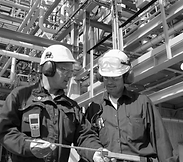Engineering and Technology Quarterly Reviews
ISSN 2622-9374




Published: 20 September 2021
Analysis of Abandoned Mine Wastes Disposal Techniques in Malawi: A Concept of Circular Economy
Horris K. Nangulama
Malawi University of Business and Applied Sciences (Malawi), Zhejiang University (China)

Download Full-Text Pdf
10.5281/zenodo.5514942
Pages: 1-9
Keywords: Abandoned Mine Waste, Recycling Technique, Circular Economy, Environmental Protection, Integrated Business Model
Abstract
Non-operational mines mostly constitute of significant quantities of valuable mineral resources within tailings and waste rock that can be disposed properly using innovative techniques. Proper waste disposal techniques do not only reduce the need for new mines to be developed but also have broad beneficial results on mining environmental impact. This paper presents a solution on abandoned mine wastes in Malawi. Malawi government wants to embrace techniques on former mine waste recycling operations that incentivize investment. Thus, this analysis proposes abandoned mine waste recycling technique for Malawi government to adopt. Recycling technique, as one of the current direction methods, is determined for adoption. The powerful impacts of recycling principles in turning Malawi’s abandoned mine wastes into beneficial products that can support and sustain its economy are given. The concept of circular economy is prominently in the picture, so the wastes can be changed into wealth and other created benefits.
References
Ambec, S., et al. (2013). The Porter Hypothesis at 20: Can environmental regulation enhance innovation and competitiveness? Review of Environmental Economics and Policy, Vol. 7/1,(pp 2–22). http://dx.doi.org/10.1093/reep/res016.
Barr Engineering. (1986). Feasibility assessment of mitigation measures for Gabbro and waste rock stockpiles—Dunka Pit Area. Prepared for Erie Mining Company, Hoyt Lakes, Minn.
Bergquist, A., et al. (2013). Command-and-control revisited: Environmental compliance and technological change in Swedish industry 1970–1990.Ecological Economics.
Carbine Resources. (2018). Mount Morgan project.Carbine Resources, Subiaco, United States.
Carter, G.S., & Bennett, J. (1973). Geology and mineral resources of Malawi. Malawi Geol. Surv. Dep. Bull, 6, (pp 1–62).
Central Asian Metals. (2018). Kounrad, Kazakhstan. Central Asian Metals PLC, London.
Chimwala M. (2016). A resource curse that is Mwaulambo Village in Malawi. Lilongwe, Malawi.
Clewell A., & Aronson J. (2004). The SER International primer on ecological restoration, Society for Ecological Restoration.
Daniel A., & Vallero, V. (2019). Introduction to Waste Management. Elsevier BV.
Denholm, C., Danehy, S., Bulsler, R. (2008). Presentation at the national meeting of the American Society of Mining and Reclamation. June.
Doley, D., et al. (2013). Adopting novel ecosystems as suitable rehabilitation alternatives for former mine sites. Ecological Processes, Vol. 2/1.http://dx.doi.org/10.1186/2192-1709-2-22.
EITI Malawi. (2019). Malawi industries transparency initiative report. BDO LLP.
Ellen MacArthur Foundation. (2014). Towards the circular economy 3: Accelerating the scale-up across global value chains. Ellen MacArthur Foundation, Cowes, United Kingdom.
Emma Sandell Festin, Mulualem Tigabu, Mutale Chileshe, Stephen Syampungani. (2018). Progresses in restoration of post-mining landscape in Africa.Journal of Forestry Research.
European Commission. (2014). Critical raw materials for the EU. European Union.
Ezekwesili, O.K., Baxter, M., Gilbo, T., Sa, D.P., Land, B., Husband, C. (2009). Malawi: Mineral sector review, source of economic growth and development.World Bank: Colombia, WA, USA.
FRTR. (2007). Remediation technologies screening matrix and reference guide.Version 4.0, Federal Remediation Technologies Roundtable, U.S. Agencies.
Government of the Republic of Malawi. (1981). Malawi Mines and Mineral Act. Malawi.
Government of the Republic of Malawi. (2002). Environmental impact assessment guidelines for mining projects. Malawi Growth Development Strategy. Government Printer: Lilongwe, Malawi, 2005, (pp33–34).
Government of the Republic of Malawi. (2010). Malawi growth and development strategy II (2011-2016).Ministry of Finance and Development Planning, Lilongwe, Malawi.
Government of Western Australia - Department of Mines and Petroleum. (2015). Guidelines for preparing mine closure plans. Government of Western Australia, Western Australia.
Grynberg, R., Kandaswamy, V., Singogo, F. (2021). The ASGM sector in Africa—A child of misery and desperation.Dev. South. Afr.
Haibin Liu. (2010). Recycling utilization patterns of coal mining waste in China. Resources, Conservation and Recycling.
Heden, R.S. (2002). Presentation at the national meeting of the American society of mining and reclamation, June.
Hubert, D. (2016). Future mining revenues for Malawi, a case study of Mkango’s. OXFAM. Malawi.
Human Rights Watch. (2016). They destroyed everything. Mining and Human Rights in Malawi, United States of America.
ICMM. (2018). The “circular economy” in mining and metals.International Council on Mining and Metals, London.
International Union for Conservation of Nature. (2012). IUCN members in Malawi speak on the environmental situation. Malawi.
Kabir, S., Rabbi F., Chowdhury M. (2015). Mine closure planning and practice in Canada and Australia: A comparative review. World Review of Business Research 5, (pp 1–22).
Kapyepye, M. (2012). Kanyika Niobium Project Social Impact Assessment Report. Blantyre.
Knapp, F. (2016). The birth of the flexible mine: Changing geographies of mining and the e-waste commodity frontier.Environment and Planning A: Economy and Space, Vol. 48/10, http://dx.doi.org/10.1177/0308518x16652398.
Kokko, K., et al. (2015). Sustainable mining, local communities and environmental regulation.Barents Studies: Peoples, Economies and Politics, (pp 51–81). https://lauda.ulapland.fi/handle/10024/6.
Land Use Consultants. (2014). Strategic environmental and social assessment of Malawi’s minerals sector interim report.Ministry of Natural Resources, Energy and Mines, Lilongwe, Malawi.
Lèbre, É. (2017). The role of the mining industry in a circular economy: A framework for resource management at the mine site level.Journal of Industrial Ecology, Vol. 21/3,(pp 662–672).
Lombe, W. (2003). Small scale mining and the environment: Bloom beyond the doom and gloom.J. Clean. Prod, 11, (pp 95–96).
Malawi Government Ministry of Finance Economic Planning & Development. (2017). Annual economic report 2017.Malawi.
Maneya, G., Chigamba W., Msika B. (2014). Environmental Audit for Kaziwiziwi Coal Mine. Kaziwiziwi Mining Company, Malawi.
Mines and Minerals Act. (2019). Mines and minerals.Malawi.
Moffat, K., Zhang A. (2014). Australian attitudes toward mining: Citizen survey - 2014 results.CSIRO, Australia.
OECD. (2017). Multi-dimensional review of Kazakhstan: In-depth analysis and recommendations. OECD Development Pathways. OECD Publishing, Paris.
Oruonye, E.D and Ahmed Y.M. (2018). Inventorisation of abandoned mines and quarry pits in Taraba state. Nigeria.
Paladin Energy. (2017). Kayelekera uranium mine. Malawi.
Phiri, SM., Chigamba, W., Phiri, F. (2010). EIA of Kautsi hill quarry project. Lilongwe.
Reisman, D., Ruttcowski, J., Smart, J. (2008). The construction and instrumentation of a pilot treatment system at the standard mine superfund site.National Meeting of the American Society of Mining and Reclamation, June, Ric. Lexington, Ky: American Society of Mining and Reclamation.
Söderholm, K., et al. (2014).Environmental regulation and mining sector competitiveness.Luleå University of Technology, Sweden.
Soderqvist, T., Brinkhoff P., Norberg T., et al. (2015). Cost-benefit analysis as a part of sustainability assessment of remediation alternatives for contaminated land. J. Environ Manage, 157, (pp 267–278).
Terzon, E. (2018). Mount Morgan abandoned mine site brings together environmentalists and farmers.Australian Broadcasting Corporation.
Thimmiah, S. (2014). Where are miners and metals in the circular economy?The Guardian.
Thokozani Chenjezi. (2018). How a ‘Ghost’ coal company duped Malawi. Malawi.
US GAO. (2011). Abandoned mines: Information on the number of hardrock mines, cost of cleanup, and value of financial assurances.US Government Accountability Office, Washington, DC.
USEPA (U.S. Environmental Protection Agency). (2008). Record of decision, operable unit 4, chat piles, other mine and mill waste, and smelter waste.Tar Creek Superfund Site.
World Bank. (2004).Striking a better balance.The World Bank Group and Extractive Industries - the Final Report of the Extractive Industries Review. World Bank.
Yosoon, C. (2016). Sustainable development of abandoned mine areas using renewable energy systems: A case study of the photovoltaic potential assessment at the tailings dam of abandoned sangdong mine.Korea.
Zhenling, L., Gang, L., Zhengquan, G. (2010). Notice of retraction: Study on the waste recycling and reusepatterns in coal mines.2010 IEEE International Conference on Advanced Management Science (ICAMS2010).



